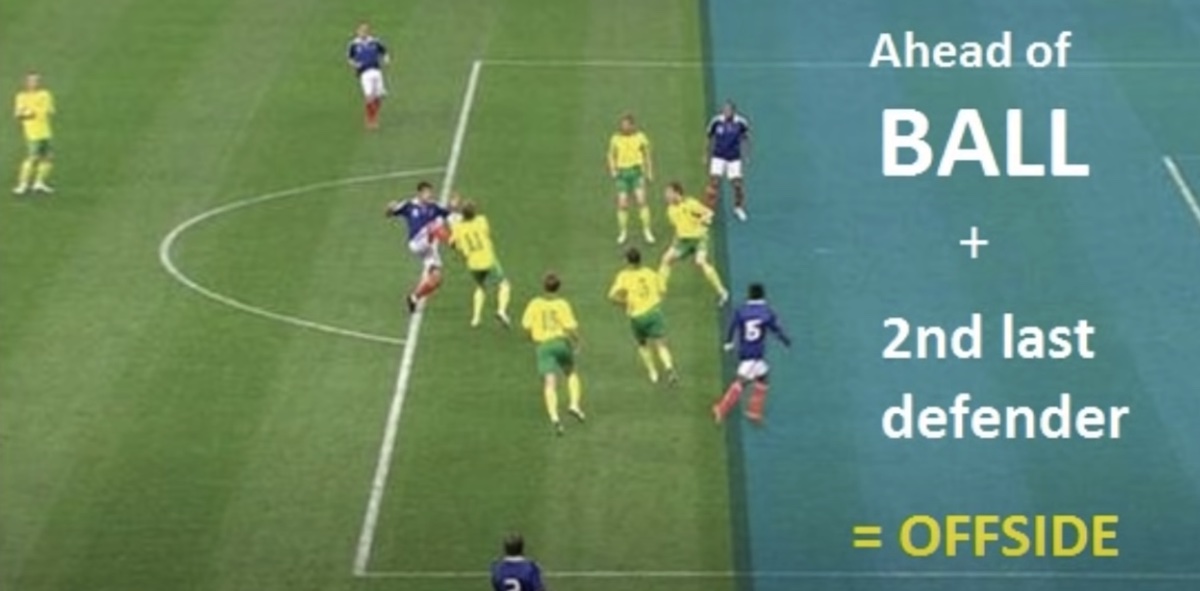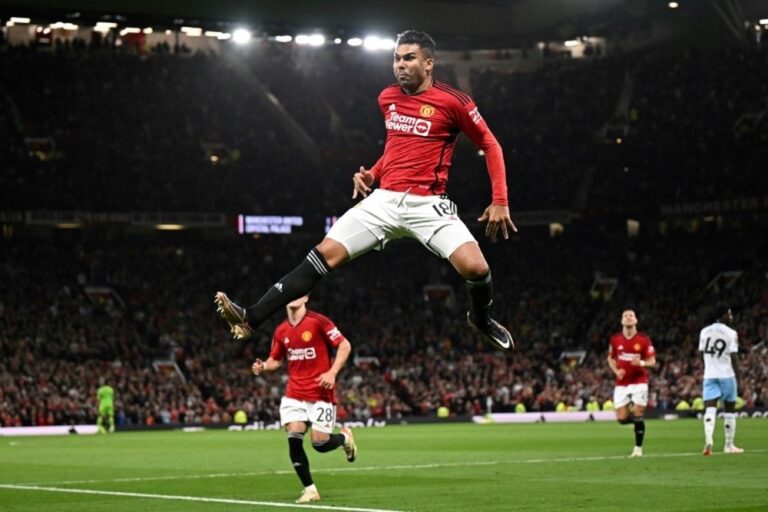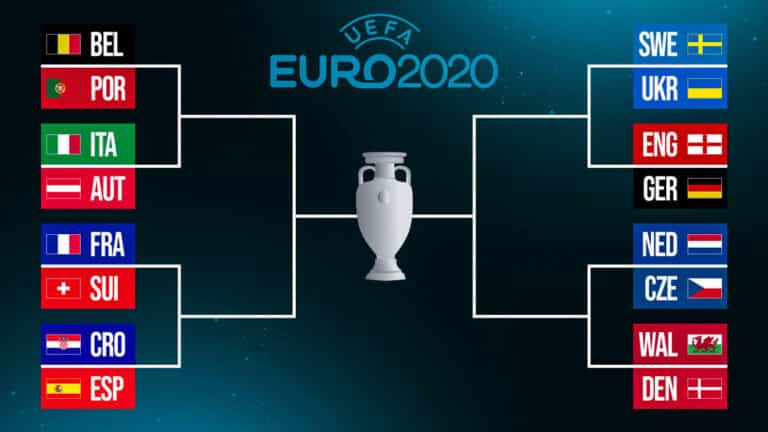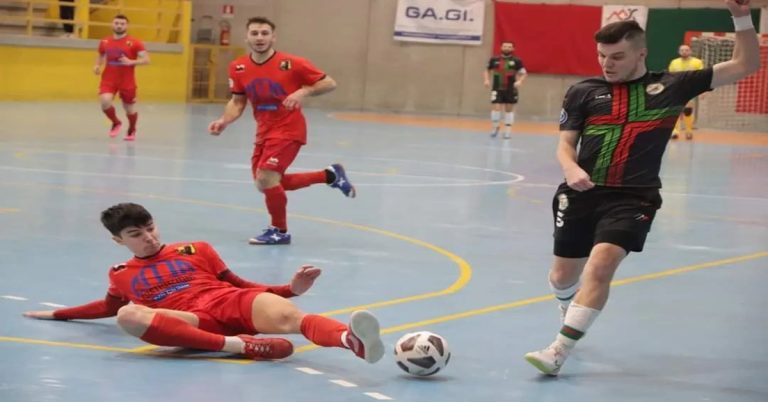Offside In Soccer: Explained
The term Offside in Soccer is much easier to understand if you have played the game than if you have simply watched it. For those that have only watched it and or are new to the game, it can be quite confusing to downright confounding and often infuriating!
What then is a simple definition of ‘offside’?
From a definition perspective the rule itself does not appear that complex. Quite simply, offside in Soccer is:
‘A player is in an offside position if: any part of the head, body or feet is in the opponents’ half (excluding the halfway line) and any part of the head, body or feet is nearer to the opponents’ goal line than both the ball and the second-last opponent’.
Spotting an offside in soccer
Based on the above definition then, it should be easy to spot when an ‘offside’ occurs, right? Well not quite, especially if you look at the current official rules of the game for the 2021-2022 season and all the relevant factors that pertain to when offside occurs:
So in this article, I’m going to try and explain primarily how you know an offside has occurred and then how you can understand why it occurred.
Linesmen – the people who initially determine ‘offside’.
The ‘linesmen’ on the side of the pitch are the people who are tasked with having complete and full knowledge of ‘Law 11’ and it’s their job to signal to the referee if they believe an ‘offside’ has occurred. They do this by raising their flag directly upwards in the air.
So as a fan, if you see a ‘linesman’ raising his flag in the air particularly when a side is on the attack or a player is through on goal and no other apparent offense has occurred it is more than likely an ‘offside’. The referee will blow his whistle, the game will be halted and a ‘free kick’ will be awarded to the defending team from where the player was adjudged offside.
Linesmen, ‘offside’, and the modern game.
The offside in soccer rule has probably been ‘tinkered’ with more than any other rule in Soccer. As the game became more commercial and more money flowed into it, so more pressure was placed on the officials to get these decisions right. The reason, a goal for example which may have won a ‘Cup Final” et al. and was actually offside could literally cost a club millions of dollars. So technology was introduced to assist the linesman and referee in ensuring correct decisions would supposedly always be made.
Enter VAR and the delayed flag!
Firstly, let’s describe VAR or the Video Assistant Referee. VAR is essentially a team of 3 referees who operate ‘virtually’ in the background with the use of technology to help ensure the linesman and the referee make correct decisions. One of their tasks is to advise whether an on pitch offside decision is correct. This was first introduced into MLS in 2017.
With the advent of VAR came the delayed flag. What now occurs, as opposed to traditionally, is that ‘linesmen’ are no longer directed to raise their flag the instant they suspect an offside (or other offense) has occurred. Instead, they are encouraged to let play continue, especially if a goal scoring opportunity is likely to occur. VAR can then review the incident afterwards -from multiple angles and with precision technology- so the referee can overturn a goal if it was in fact ‘offside’. This helps to try and ensure the game is more entertaining with more goals scored.
Please note however VAR operates differently in MLS to how it does for example in the EPL. A very good explanation of how and why is provided here.
Offside In Soccer More Information
Ok, you have now read the rule(s) of offside in soccer, and who and how the final decision of whether a player is considered offside is made. Let’s now elaborate on the basic rule and in doing so, clarify and answer some of the questions you may have about ‘Offside”. For instance, a player cannot be offside when:
- He is in his own half.
- The ball is played to him by an opposition player.
- He receives the ball directly from a throw in, corner or goal kick.
- He is exactly level with the second-to-last opponent.
- He is level with or behind a teammate who plays them the ball.
- He is deemed to be ‘not active in play’.
Consideration as to whether a player is in ‘active play’ or not is one of the more contentious decisions in ‘offside’ and up to a referee or VAR’s discretion. For it is not actually an offense to be in an offside position, only if you or your team gain an advantage from it.
One particularly extreme example here to illustrate the point would be; if a player was on the goal line but by the corner flag, say after being injured. If his team mate then ‘rifled’ the ball into the top corner from 25 yards, he would not be considered ‘offside’ as he would not be deemed to be ‘interfering with’ or in ‘active’ play.
Ok, I hope that covers as simply as possible the ‘offside rule’ – if not, please feel free to read up on Law 11! But in all seriousness, if you take the basic premises of this article in mind and then simply remember them while watching the game, you should be up to speed on the most difficult to understand rule in Soccer in a reasonable time.
Finally, please note for the 2021 season, the following changes have been implemented in the EPL and it’s likely other leagues will be similarly lenient for the good of the game also.
To quote EPL Referee Chief Mike Riley
“VAR teams will not intervene for trivial offences and the threshold for referee and VAR intervention will be slightly higher than it was last season.
“We’ve introduced the benefit of the doubt for the attacking player so where we have a really close offside situation, we will follow the same process as last year but now apply thicker broadcast lines.
(These are the technical computer generated lines which show if a player is in an offside position)
“Effectively what we have done is given back 20 goals to the game that were deemed offside last season by using quite forensic scrutiny.
“So it’s the toenails, the noses of players that were offside – they won’t be offside now.”
So hopefully we can all now enjoy a season in which a glorious goal from our favorite team/player will stand rather than it being ruled out as was the case several time last season because his fingernail was offside!
A fan and participator of more or less all sports up to University level from Burnley, England. I am now writing as a freelance sports journalist. My speciality in particular lies in global Football (soccer) – which I played to a semi-professional level.





